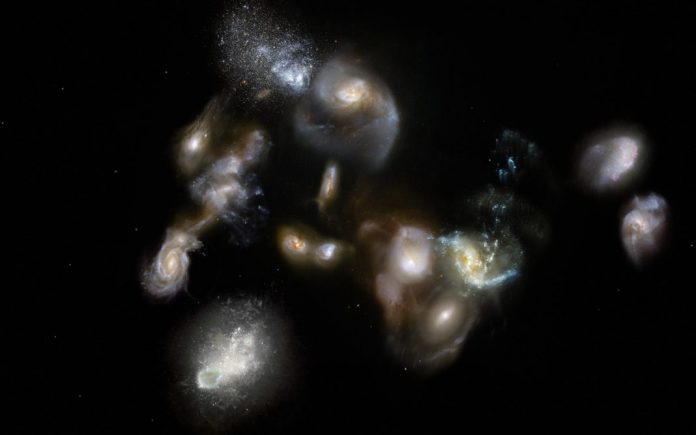These simulations indicated that once these galaxies merge, the resulting galaxy cluster will rival some of the most massive clusters we see in the Universe today.
The research team, led by Tim Miller from Dalhousie University in Canada and Yale University in the US and Iván Oteo from the University of Edinburgh, UK, uncovered dense concentrations of galaxies – a protocluster – with the Miller team looking specifically at the cluster named SPT2349-56.
The individual galaxies in this dense cosmic pileup are starburst galaxies and the concentration of vigorous star formation in such a compact region makes this by far the most active region ever observed in the young Universe. Thousands of stars are born there every year, compared to just one in our own Milky Way.
The Oteo team discovered a similar megamerger formed by ten dusty star-forming galaxies, nicknamed a “dusty red core” because of its very red colour, by combining observations from ALMA and the APEX.
Oteo explains why these objects are unexpected: “The lifetime of dusty starbursts is thought to be relatively short, because they consume their gas at an extraordinary rate. At any time, in any corner of the Universe, these galaxies are usually in the minority. So, finding numerous dusty starbursts shining at the same time like this is very puzzling, and something that we still need to understand.”
The new observations
These forming galaxy clusters were first spotted as faint spots of light using the South Pole Telescope and the Herschel Space Observatory. Subsequent ALMA and APEX observations showed that they had an unusual structure and confirmed that their light originated much earlier than expected: around only 1.5 billion years after the Big Bang.
The new high-resolution ALMA observations finally revealed that the two faint glows are not single objects, but, are actually composed of fourteen and ten individual massive galaxies, each within a radius comparable to the distance between the Milky Way and the neighbouring Magellanic Clouds.
Current theoretical and computer models suggest that protoclusters as massive as these should have taken much longer to evolve.















